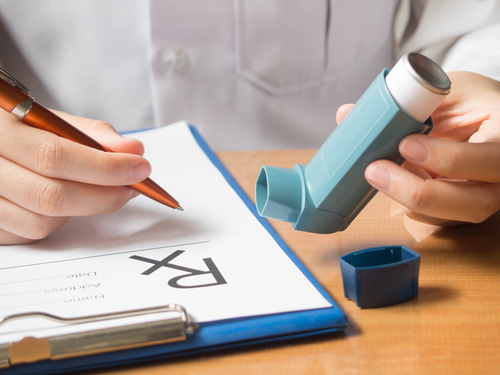Doctors and Patients View Inhaler Devices as Less Important than COPD Medication, Survey Shows

A recently published survey showed that both patients and healthcare providers place less importance on inhaler devices than medication in the treatment of chronic obstructive pulmonary disease (COPD).
Even though past studies have shown that learning good inhaler techniques is key to achieving optimal COPD care, the survey revealed that both patients and healthcare providers were relatively unconcerned with their proper use.
The survey was conducted as part of an ongoing project — Delivery Makes a Difference (DMaD) — to better understand the perspectives of healthcare providers and patients about the role of inhalation delivery devices in COPD. According to a press release, the team believes that the generalized poor understanding and misuse of inhaler devices might be the main reasons for ineffective COPD management.
Researchers from the American College of Chest Physicians conducted the survey and their findings were published in the Journal of the COPD Foundation under the title “The Role of Inhalation Delivery Devices in COPD: Perspectives of Patients and Health Care Providers.”
Researchers analyzed data derived from two web-based surveys of 513 healthcare providers managing COPD and 499 patients with COPD across the United States.
Results from the survey revealed that the type of inhaler device was only of limited importance to physicians when prescribing medication for newly diagnosed patients — only 37 percent of physicians said the choice of the device was highly important, and only 45 percent said they evaluated the patient’s technique when first prescribing a device.
Furthermore, even though most physicians said they gave individualized one-on-one training, most did not report consistently checking device technique in newly diagnosed patients. Such assessment occurred even less often among primary care providers compared to pulmonologists (32 versus 52 percent).
In addition, when treating COPD patients with frequent exacerbations, 87 percent of healthcare providers said they were much more likely to change or add medications than to switch to a different inhaler while maintaining the same medication. These changes in treatment were also typically triggered by disease symptoms and exacerbations, rather than by poor device technique.
According to the team, only two factors were associated with a higher probability of changing devices to one that was easier to use: low-medication adherence and patient management by a pulmonologist.
Concerning patients, the survey showed that most (64 percent) were relatively unconcerned about proper device use, regardless of their COPD severity.
Also, barriers to optimal inhaler use were found to be relatively common among COPD patients. Those with the lowest adherence scores were more likely to report physical difficulties when handling their medication or devices, including arthritis, difficult fine motor movement, or poor eyesight.
In fact, a recent study showed that patients with COPD and rheumatoid arthritis struggle to manage their respiratory condition because their inhalers are too complex given their physical limitations.
Researchers believe that improved educational efforts could help ensure proper selection and use of inhalation devices, ultimately leading to better clinical outcomes and reduced costs. Such education efforts should also address healthcare professionals’ time constraints, which have also been mentioned as a barrier to provide effective patient education on inhaler use, they added.






